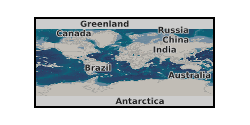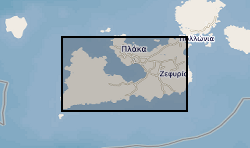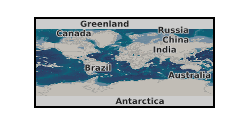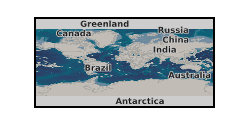Clays
Type of resources
Available actions
Topics
Keywords
Contact for the resource
Provided by
Years
Formats
Representation types
Update frequencies
Scale
-

The main aim of the project is to determine the shrinkage and swelling properties of UK clays and mudrocks and to investigate the relationships between them. Thus leading to a better understanding of the shrink/swell behaviour for the user community. Dataset contains geotechnical, physical, mineralogical and geochemical data.
-

In August 2020, two natural slopes just outside Kuala Lumpur, Malaysia, were instrumented with sensors to measure soil suction and volumetric water content (VWC), and rainfall. At present, data has been collected at the two sites for approximately one year, although measurements are expected to continue for the foreseeable future. The measurements taken are aimed at providing guidance on the stability of soil slopes in response to changing climatic conditions. Data is currently being analysed by researchers at Durham University and the National University of Malaysia (UKM).
-

Shrink-swell is recognised as the most significant geohazard across Great Britain. This dataset identifies areas of shrink-swell hazard with increased potential due to changing climatic conditions based on forecasts derived from the UKCP18 climate projections. The dataset has been created at two levels of detail for RCP8.5 emissions scenario and dates up to 2070. The Basic dataset is an overview at 2Km grid resolution whilst the more detailed Premium dataset is generated at a 50m resolution. The Open versions are simplified versions of the premium versions and are shared via BGS GeoIndex. The premium versions are paid for products. UKCP18 - UK Climate Projections 2018 project RCP8.5 - A pathway where greenhouse gas emissions continue to grow unmitigated, leading to a best estimate global average temperature rise of 4.3°C by 2100. Representative Concentration Pathways (RCPs) are a method for capturing those assumptions within a set of scenarios.
-

This dataset provides an overview of hydrothermal alteration samples from the island of Milos, Greece, that were analysed using a portable infrared mineral analyser (PIMA) or AgriSpec spectrometer. During data acquisition, spectrums were input into The Spectral Geologist (TSG) to provide an instant and estimated mineral identification using the shortwave infrared (SWIR) part of the electromagnetic spectrum. The samples were acquired during field visits between 2017 - 2019 by the British Geological Survey and the GW4+ Doctorial Training Partnership (NE/L002434/1). This data was primarily used to aid sample collection for further hydrothermal alteration analyses to improve our understanding of regional and local paleo-hydrothermal activity across the island. Identification by the TSG provides an estimation only, and the raw data files in .txt, .fos and .csv formats, are supplied for each analysis in the attached zipped file. This may be useful within the metallic and industrial mineral mining sector and associated researchers. The data includes grid references (± 5 m), TSG interpretations, and field/sample observations noted during data acquisition. GW4+ Doctoral Training Partnership (NE/L002434/1) is supported by grant award GA/09F/139 – RMS E3557, and the British Geological Survey’s University Funding Initiative (BUFI S345).
-

This dataset contains raw experimental direct shear testing data as presented by "Ougier-Simonin, A., Castagna, A., Walker, R. J., & Benson, P. M. (2018). Frictional and mechanical behavior of simulated, sedimentary fault gouges. In AGU Fall Meeting Abstracts (Vol. 2018, pp. T11E-0212)". The data is provided in a .zip folder containing the files of 8 experiments that are accompanied by a README file for introduction. Files format is Microsoft Excel Worksheet (.xlsx) and data are tabulated. Each file contains the corresponding relevant sample’s details, and each column of data is clearly labelled, units included. For each experiment, time, axial force, axial displacement, axial stress, confining displacement, confining pressure, internal temperature, and axial delta P were recorded. Details of calculations for shear stress and coefficient of friction are also provided. Eight gouge (rock powder) samples of Monte Salici sandstone (Numidian Flysch, Appenninic-Maghrebian Chain; Sicily), ‘Comiso’ limestone (Ragusa Formation; Sicily) and Quaternary Clays (blue-grey clay in Fiumefreddo, Sicily) were tested in direct shear using sliding holders in triaxial compression at a confining pressure of 50 MPa. After 4 mm of axial (shear) displacement at 1 micron per second, variable rates of axial displacement were applied to induce velocity steps condition and measure rate-and-state parameters. Maximum displacement: ca. 9.8mm. All tests done at room temperature. The experiments were conducted by Drs A. Castagna and A. Ougier-Simonin using the MTS815 Rock Testing System in triaxial configuration and homemade sliding holders in the Rock Mechanics and Physics Laboratory of the British Geological Survey; both responsible for the collection and initial interpretation of the data. One test presented an issue on one of the signals recorded; the data are still shared for information purposes and the corresponding set of data is clearly named to indicate this fact.
-

This dataset contains raw experimental direct shear testing data as presented by "Ougier-Simonin, A., Castagna, A., Benson, P. and Walker, R. (2017). Direct shear characterisation of simulated clay-bearing gouges: a case study from the Pernicana Fault System (Mount Etna, Sicily). In EGU 2017 General Assembly Conference Abstracts (p. 15794)". The data is provided in a .zip folder containing the files of 12 experiments that are accompanied by a README file for introduction. Files format is Microsoft Excel Worksheet (.xlsx) and data are tabulated. Each file contains the corresponding relevant sample’s details, and each column of data is clearly labelled, units included. For each experiment, time, axial force, axial displacement, axial stress, confining displacement, confining pressure, internal temperature, and axial delta P were recorded. Details of calculations for shear stress and coefficient of friction are also provided. Twelve gouge (rock powder) samples of Monte Salici sandstone (Numidian Flysch, Appenninic-Maghrebian Chain; Sicily), ‘Comiso’ limestone (Ragusa Formation; Sicily) and Quaternary Clays (blue-grey clay in Fiumefreddo, Sicily) were tested in direct shear using sliding holders in triaxial compression at a range of confining pressures of 10, 30 and 50 MPa. Clay and sandstone samples tests were conducted at 0.3 microns per second of axial displacement rate; limestone and mixed gouges tests were conducted at 1 micron per second. Maximum displacement: ca. 9.8mm. All tests done at room temperature. The experiments were conducted by Drs A. Castagna and A. Ougier-Simonin using the MTS815 Rock Testing System in triaxial configuration and homemade sliding holders in the Rock Mechanics and Physics Laboratory of the British Geological Survey; both responsible for the collection and initial interpretation of the data.
 NERC Data Catalogue Service
NERC Data Catalogue Service